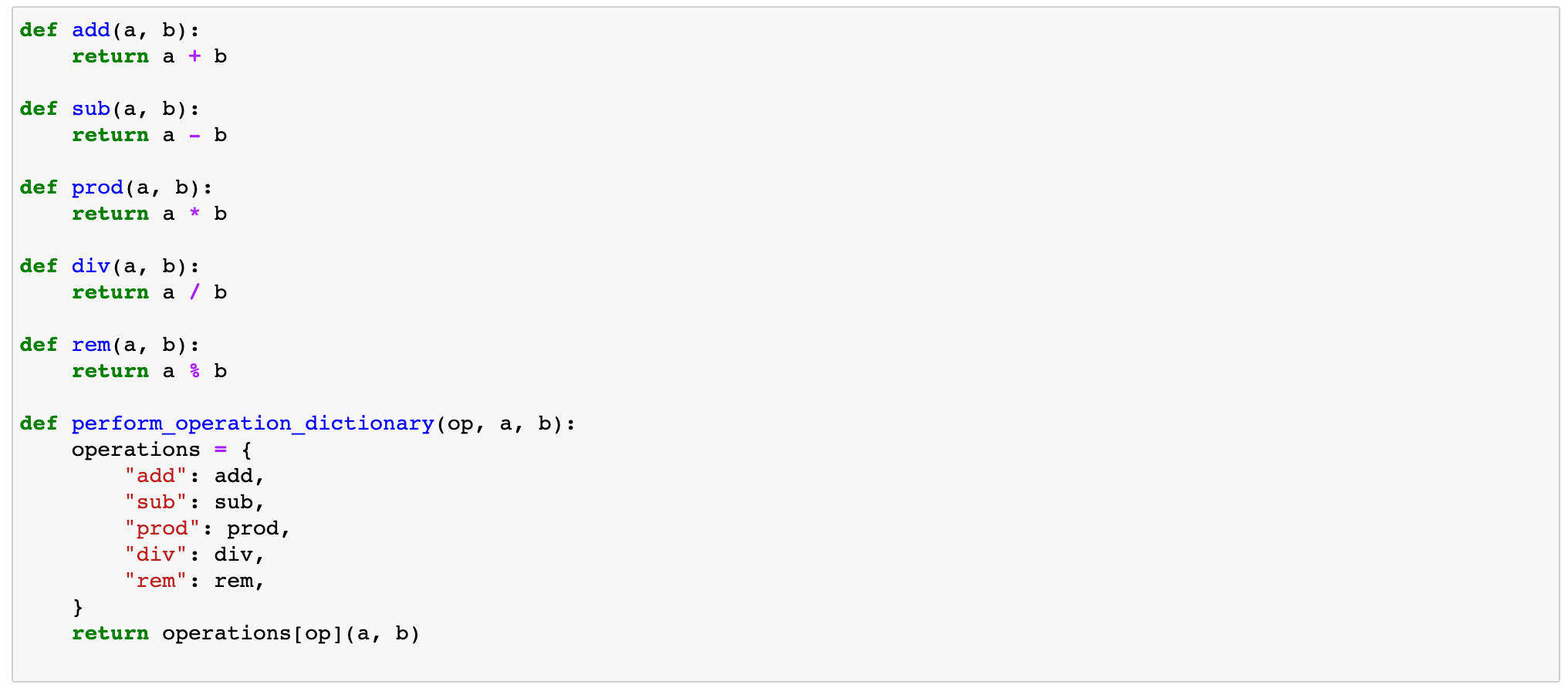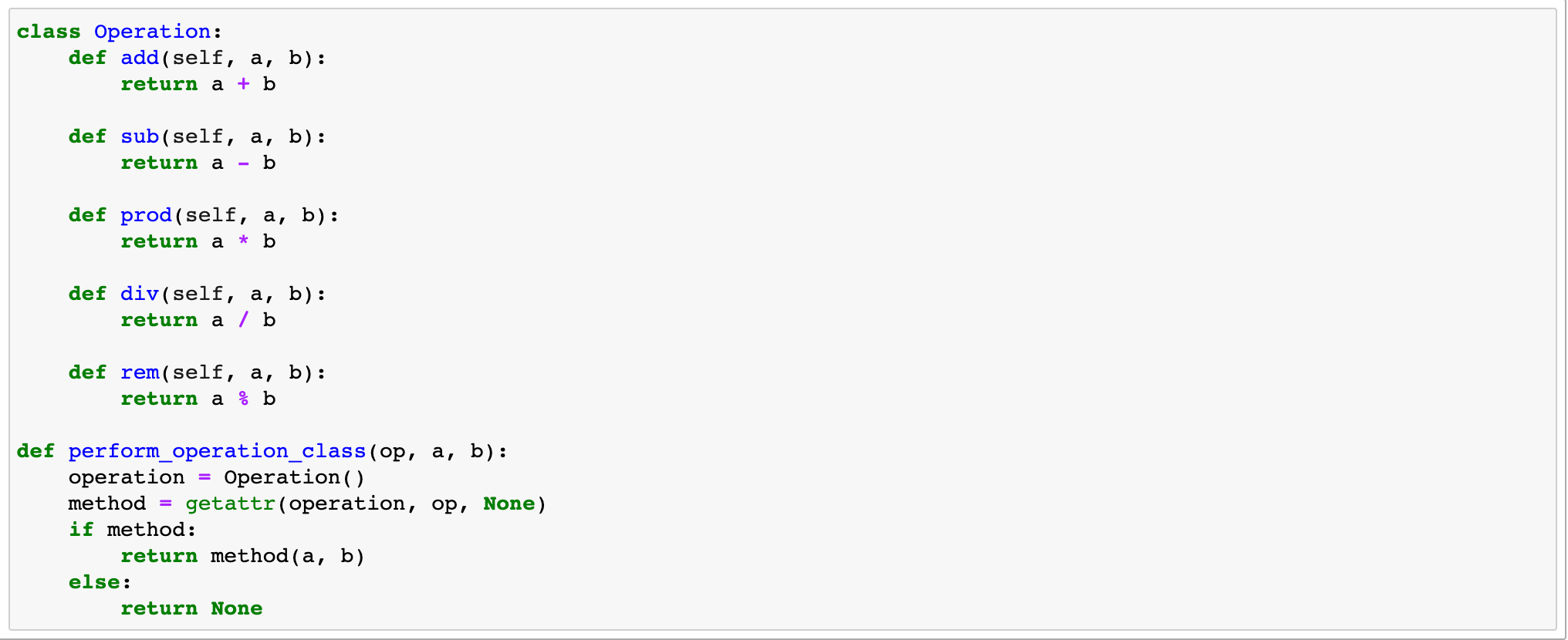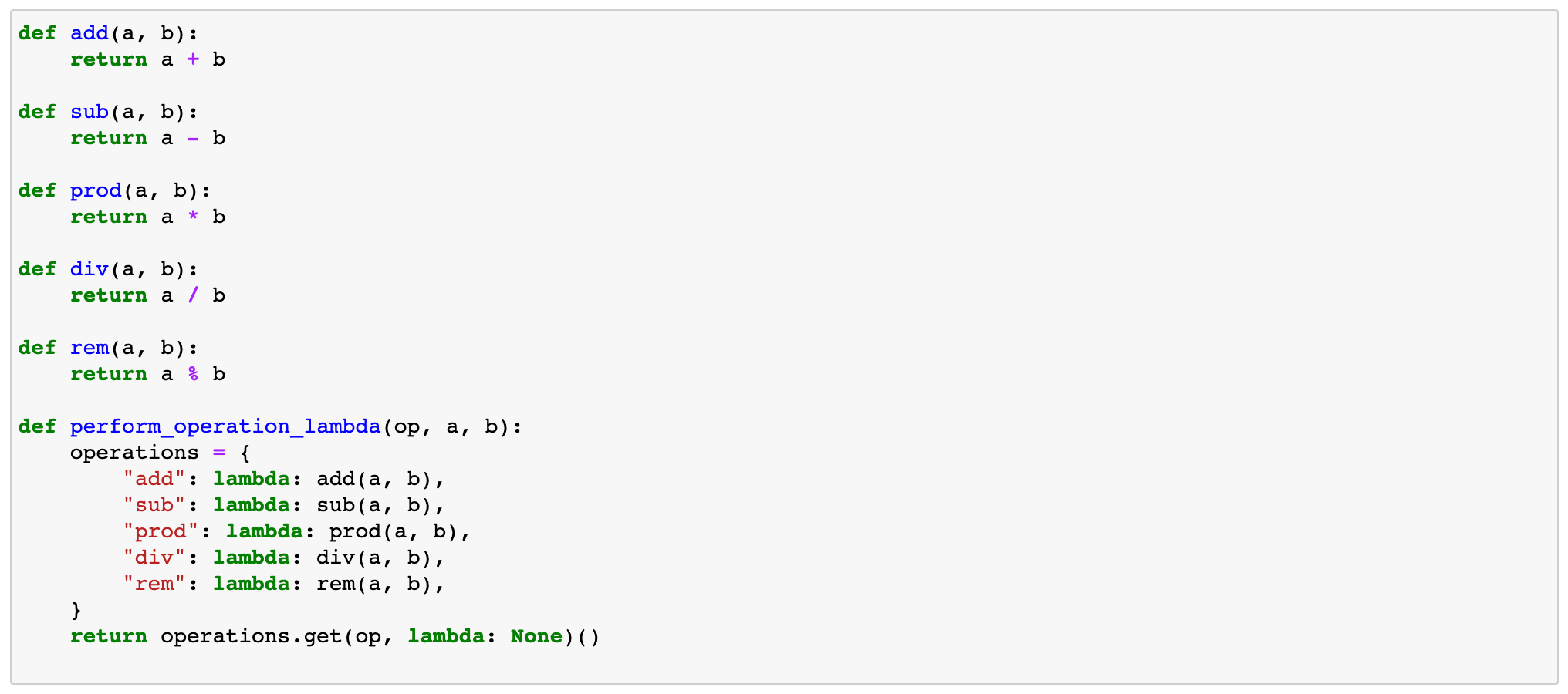If you’re familiar with programming languages like Java, C++, or C, then you probably know the switch case.
Although Python does not have a built-in switch case statement, there are alternative methods to implement it, and new methods have been introduced with Python 3.10.
The switch case is like a shorter and faster version of the if-else block. It’s useful because if you plan to modify the code, unlike if-elif statements, you can just remove one condition without the need for editing, and it’s more readable.
Even though Python doesn’t have a built-in switch case, after Python 3.10, it introduced “match case,” which we’ll see in this article.
We’ll also implement a Python switch case by using if-elif-else statements, dictionaries, Python classes, and Python functions with lambdas.
Let’s start!
Understanding Switch Case in Python

Python programming language doesn’t have a native switch case statement like other programming languages. Instead, programmers relied on using different methods to do that before Python 3.10 was introduced.
After Python 3.10 introduced the match case construct, which functions similarly to a switch case. This new addition allows you to implement pattern matching to check for specific patterns and execute actions accordingly.
Using match case, you can write concise and readable code:

In the code block above, the match case statement checks the value of the data variable and returns the corresponding string as the default value. The underscore _ is used as a default case when no other cases are matched.
In the following sections, we’ll examine how you can implement switch case statements in Python, with and without match case.
How to Implement Switch Case Before Python 3.10
Before the introduction of Python 3.10, there was no built-in switch case statement. However, developers found ways to mimic switch case statements using multiple approaches like:
- If-else statements
- Dictionary mapping with key-value pairs
- Python classes
- Python functions with lambdas
These methods allowed programmers to manage control flow and implement switch case statements, even though a built-in switch case statement was not provided.
In this section, we’ll explore these various techniques to understand how they can be used to implement Python switch case statements.
1. Using If-Else Statements
In Python, if-else statements can be used instead of switch statements. By defining different conditions with specific behaviors, you can achieve the same thing. This approach is suitable when you have multiple conditions to check.
Remember that the match case construct is only available in Python 3.10 and later. In previous versions of Python programming language, you’ll need to use if-else statements, dictionaries, classes, or lambda functions to achieve similar functionality.
This method is straightforward, but it may not be the most readable or efficient when dealing with a large number of conditions.
Here’s an example of a simple switch case-like control flow using if-elif-else:

Let’s test the code snippet to see if it works using “3” and “2” as parameters:

Here’s the output:

Using an if-else block in your code might not be the best idea, as it can make your code complicated or hard to understand.
However, if you use Python’s inline if, it can make your code shiny again. It’s a shorter and better version of the if-else block.
You can learn more about that here.
2. Using Dictionaries
An alternative to using if-elif-else for implementing a switch case is to use dictionaries. This technique provides a more efficient way to manage multiple conditions.
The idea is to map conditions to specific functions and then call the corresponding function from the dictionary.
Here’s an example using a dictionary to perform the same operation as in the if-elif-else example. Let’s write individual functions for this:

You can see all the functions above but we will just just two of them.

Here is the output:

Great, it works. Now let’s test another one:

Let’s see the output.

Dictionary mapping can make your code more modular and easier to maintain as it grows. It’s a solid choice when you need to manage a large number of conditions in your control flow.
3. Using Python Classes
With Python classes, you can put the code for each switch case in its own method. This groups together all the code for each case and makes the whole switch statement easier to follow.
Here’s an example:

Now it is testing time.

Let’s see the output:

These code snippets take advantage of Python’s dynamic typing and reflection capabilities to call a method by name. It’s a clean way to mimic the behavior of a switch case statement using classes.
If you have trouble understanding how Python classes work in the code snippets above, this guide can help you discover the various methods to import classes in Python to enhance your code’s organization and reusability.
4. Using Python Functions and Lambdas
Python functions and lambdas provide a flexible way to create a switch case statement. By combining functions with dictionaries, (using key-value pairs), you can create a concise and powerful way to manage multiple conditions.
In the below example, we’ll use functions and lambdas to perform the same operation:

Let’s test our lambda function:


In the complete code above, we’ve created a dictionary that maps the operation name to the corresponding function call. This allows us to easily add or remove operations without changing the perform_operation_lambda function itself.
We’ve covered a lot of ground so far. In the next section, we’ll take an in-depth look at how to implement the switch case statement after Python 3.10.
How to Implement Switch Case Statement After Python 3.10
As we saw earlier, Python 3.10 introduced a powerful new feature called Structural Pattern Matching. This addition brought switch case-like functionality to Python.
Here, we’ll provide an in-depth look at this new feature, focusing on its syntax, usage, and some examples.
The new switch case feature is implemented using the match and case keywords. This new syntax goes beyond what other programming languages, like JavaScript, use for their switch statements.
Basic Syntax and Usage of Match Case Statements
The basic syntax of the match case statement is simple. It uses the match keyword followed by an expression and one or more case blocks. The structure is as follows:

Here’s an example of using the match case statement to process an integer:

Let’s test the above example with the number “2” as a parameter. The output should be “two” in this case:

Here is the output, and it looks like it’s working!

Advanced Pattern Matching
The match case statement goes beyond simple value matching. It allows for complex pattern matching, like unpacking sequences, capturing variables, and combining patterns.
Here’s an example:

Now, let’s test it by providing the coordinates “5, 0” as a parameter:


The above code prints out the correct output, which is “X axis at 5”!
Final Thoughts
Switch case statements, or their Pythonic alternatives, are more than just tools for decision-making; they represent the essence of structured programming. Python, known for its simplicity and readability, might not have a traditional switch case, but its alternatives are equally powerful.
It’s essential to remember that the best programming practices are often about clarity and maintainability. Whether you’re using the new match case, dictionaries, or if-elif-else chains, the goal remains the same: to write code that’s easy to understand, modify, and debug.
Understanding and implementing switch case-like behavior in Python is a rewarding experience. As you continue your Python journey, always remember to explore, experiment, and enjoy the process. Happy Pythoning!
If you want to test your knowledge you should do so in your coding environment by using built-in datasets or create your own fake dataset with faker library like in this video:
Frequently Asked Questions
Is there a switch case in Python?
Yes, Python introduced the switch case statement feature in Python 3.10, which utilizes structural pattern matching.
Does Python 3.9 have switch case?
No, Python 3.9 does not have the built-in switch case statement functionality; it was introduced in Python 3.10.
Why is there no switch case in Python?
Python lacked switch case statements prior to version 3.10 due to its emphasis on simplicity and readability. The if-elif-else statement served as the control flow structure in the absence of a switch case function.
How to create a switch in Python?
You can create a switch in Python using the match case syntax introduced in Python 3.10 or by using dictionary mapping to key-value pairs, to define corresponding functions or cases.
Is switch faster than if?
The implementation of a switch case statement in most programming languages might be faster than multiple if-else statements. However, in Python, the difference is generally minimal, and switch case statements are primarily used for better readability and control flow.
Why not use switch case?
Before Python 3.10, there was no built-in switch case statement in the language. Instead, developers used if-elif-else statements or dictionary mapping to key-value pairs to achieve similar functionality.
Even after the introduction of the switch case in Python, some may prefer traditional methods due to familiarity or compatibility with earlier versions of Python.
How do you switch two characters in Python?
To switch two characters in Python, you can use string slicing and concatenation. There’s no specific switch method inside the language to handle this.
How do I use switch case with user input in Python?
To use switch case-like behavior with user input in Python, you can use methods such as if-elif-else statements or dictionary mappings.
Start by taking the user input and then implement the chosen method to check for the input value or condition. Based on the match, execute the corresponding block of code or call the associated function.








